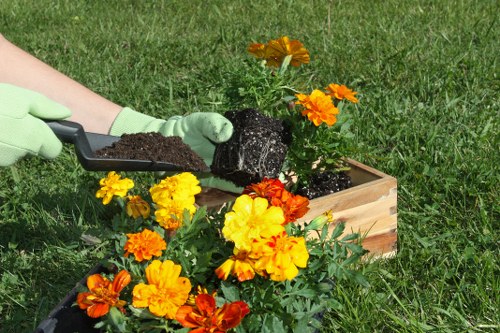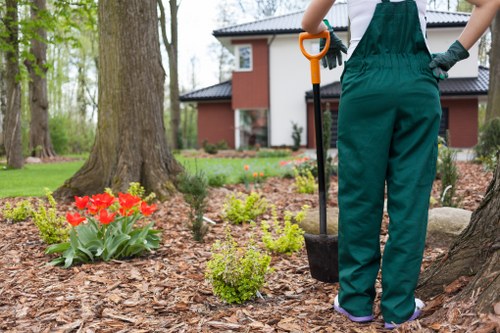Expert Hedge Trimming Services in Victoria

Understanding the Importance of Hedge Trimming
Maintaining well-trimmed hedges is essential for the overall health and aesthetics of your garden. Hedge trimming in Victoria not only enhances the visual appeal of your property but also promotes healthy growth and prevents pests and diseases.
Regular trimming ensures that your hedges maintain their shape and structure, making them a beautiful feature in your landscape. Additionally, well-maintained hedges can act as natural barriers, providing privacy and reducing noise pollution from nearby streets.
Neglecting hedge maintenance can lead to overgrown, unruly plants that are difficult to manage and may even become hazardous during severe weather conditions. By investing in professional hedge trimming services, you can avoid these issues and enjoy a well-kept garden year-round.

When to Trim Your Hedges
Best Seasons for Hedge Trimming
Timing is crucial when it comes to hedge trimming. In Victoria, the optimal times for trimming are during the spring and late summer. Trimming in spring encourages new growth, while late summer trimming helps maintain shape before the colder months.
Avoid trimming during extreme weather conditions, such as frost or heatwaves, as this can stress the plants. Additionally, refrain from trimming during the flowering period of your hedges to ensure they continue to bloom beautifully.
Regular maintenance, typically once or twice a year, depending on the hedge type and growth rate, will keep your hedges healthy and attractive. Consulting with a local expert can help determine the best trimming schedule for your specific plants.

Choosing the Right Tools for Hedge Trimming
Essential Tools and Equipment
Having the right tools is essential for effective hedge trimming. Common tools include hedge shears, electric trimmers, and manual pruners. For larger hedges, pole pruners and professional-grade trimmers may be necessary.
Using sharp, well-maintained tools ensures clean cuts, which are vital for the health of your hedges. Dull blades can damage the plants, making them more susceptible to diseases and pests.
Safety should always be a priority. Wear protective gear, such as gloves and safety glasses, to protect yourself from potential injuries while trimming. Additionally, ensure that your equipment is in good working condition to prevent accidents.

Professional vs. DIY Hedge Trimming
Benefits of Hiring Professionals
While DIY hedge trimming can be cost-effective, hiring professional services offers numerous advantages. Professionals have the expertise and experience to assess the specific needs of your hedges and provide tailored maintenance solutions.
They use specialized equipment that can handle even the most challenging trimming tasks efficiently and safely. Additionally, professionals can identify and address potential issues early on, ensuring the long-term health of your hedges.
Outsourcing hedge trimming allows you to save time and effort, letting you focus on other aspects of garden care or personal activities. It also ensures a consistently high standard of maintenance, enhancing the overall appearance of your property.

Environmental Considerations in Hedge Trimming
Sustainable Trimming Practices
Adopting sustainable practices in hedge trimming is essential for environmental conservation. Use eco-friendly tools and biodegradable materials to minimize your ecological footprint.
Proper disposal of trimmings ensures that they do not contribute to pollution or become a breeding ground for pests. Consider composting the clippings to create nutrient-rich compost for your garden.
Moreover, selecting native hedge species that are well-suited to Victoria's climate promotes biodiversity and reduces the need for excessive watering or chemical treatments.
Common Mistakes to Avoid
Over-Trimming and Under-Trimming
One of the most common mistakes in hedge trimming is over-trimming, which can stress the plants and stunt their growth. On the other hand, under-trimming can lead to unruly, unattractive hedges. Striking the right balance is key.
Avoid removing more than one-third of the hedge's growth during any single trimming session. This practice helps maintain the plant's health and encourages robust growth.
Additionally, always follow the natural shape of the hedge and avoid creating sharp angles or unnatural forms. Smooth, rounded shapes are not only aesthetically pleasing but also promote healthier growth patterns.
Poor Timing
Trimming at the wrong time of year can negatively impact your hedges. For instance, trimming during the winter can expose the plants to frost damage, while trimming during peak growing seasons can reduce their vigor.
Always consider the specific needs of your hedge species and consult with local experts to determine the best trimming schedule.
Enhancing Curb Appeal with Well-Trimmed Hedges
Impact on Property Value
Well-maintained hedges significantly enhance the curb appeal of your property, making it more attractive to potential buyers. A lush, neatly trimmed hedge acts as a natural hedge, providing privacy while enhancing the visual appeal of your home.
Investing in regular hedge trimming can lead to an increase in property value by creating a well-kept and inviting exterior. It also signals to neighbors and passersby that you take pride in your garden and surroundings.
Design Tips for Attractive Hedges
- Symmetry: Ensure that both sides of your hedge are evenly trimmed to maintain balance in your garden design.
- Consistent Height: Keeping hedges at a consistent height creates a cohesive look and prevents them from overshadowing other garden elements.
- Regular Maintenance: Schedule regular trimming sessions to prevent overgrowth and maintain the desired shape and size.
Choosing the Right Hedge Species in Victoria
Popular Hedge Plants
Victoria's climate supports a variety of hedge species, each with its unique characteristics. Common choices include privet, boxwood, and laurel. Selecting the right species depends on factors such as growth rate, maintenance requirements, and desired appearance.
For a fast-growing option, consider the Leyland cypress, which provides quick coverage and lush foliage. If you prefer a classic look, boxwood offers dense, evergreen hedges that retain their shape well.
Native vs. Non-Native Species
Choosing native hedge species can benefit the local ecosystem by providing habitat for native wildlife and requiring less water and care. Non-native species may offer different aesthetic qualities but often require more maintenance.
Consult with local horticulturists to determine the best hedge species for your garden's specific conditions and your maintenance preferences.
Cost Factors in Professional Hedge Trimming
Understanding Pricing
The cost of professional hedge trimming in Victoria varies based on several factors, including the size and height of the hedges, the type of trimming required, and the accessibility of the area.
Additional services, such as shaping, cleanup, and disposal of trimmings, can also influence the overall cost. It's advisable to obtain multiple quotes from reputable service providers to ensure competitive pricing.
Value for Investment
While professional hedge trimming may seem like an added expense, the benefits it provides in terms of time saved, plant health, and enhanced property appearance make it a worthwhile investment. Quality maintenance can prevent costly issues down the line, such as pest infestations or plant diseases.
DIY Hedge Trimming Tips
Step-by-Step Trimming Process
For those who prefer a hands-on approach, here are some essential tips for DIY hedge trimming:
- Choose the Right Time: Trim your hedges during the recommended seasons to promote healthy growth.
- Gather Tools: Ensure you have all necessary tools, including sharp hedge shears, gloves, and protective eyewear.
- Plan the Shape: Decide on the desired shape and size of your hedge before you begin trimming.
- Trim Gradually: Make small, incremental cuts to avoid over-trimming and causing stress to the plants.
- Clean Up: Remove all trimmings to prevent pests and maintain a tidy garden.
Following these steps can help you achieve a neat and healthy hedge without professional assistance.
Safety Precautions
- Always wear appropriate protective gear.
- Be cautious when using power tools to prevent accidents.
- Keep tools clean and well-maintained to ensure safe operation.
Maintaining Hedge Health
Preventing Pests and Diseases
Regular trimming plays a crucial role in preventing pests and diseases from taking hold in your hedges. By removing dead or diseased branches, you reduce the risk of infestations and promote better air circulation around the plants.
Implementing integrated pest management practices, such as introducing beneficial insects and using organic treatments, can further protect your hedges from unwanted visitors.
Proper Watering and Fertilization
In addition to trimming, ensuring your hedges receive adequate water and nutrients is essential for their health. Water deeply but infrequently to encourage deep root growth, and apply a balanced fertilizer during the growing season to provide necessary nutrients.
Mulching around the base of your hedges can help retain moisture, regulate soil temperature, and suppress weeds, contributing to overall plant health.
Frequently Asked Questions
How Often Should I Trim My Hedges?
Typically, hedges should be trimmed once or twice a year, depending on the growth rate and species. Fast-growing hedges may require more frequent maintenance to keep them in shape.
Can I Trim My Hedges Myself?
Yes, with the right tools and knowledge, DIY hedge trimming is possible. However, for large or complex hedges, hiring a professional may be more efficient and ensure a high-quality result.
What Are the Best Tools for Hedge Trimming?
Essential tools include sharp hedge shears, electric or gas-powered trimmers for larger jobs, and manual pruners for precise cuts. Investing in quality tools will make the trimming process easier and more effective.
Conclusion
Investing in hedge trimming in Victoria is a smart decision for maintaining the health and beauty of your garden. Whether you choose to tackle the task yourself or hire a professional service, regular maintenance ensures your hedges remain a stunning feature of your outdoor space.
By understanding the best practices for trimming, selecting the right tools, and choosing suitable hedge species, you can enjoy a vibrant and well-kept garden year-round. Don’t hesitate to contact us today to book your hedge trimming service and enhance the curb appeal of your property.